Storing chestnuts properly can turn a good dish into a culinary masterpiece. Quick tip: a cool, dry place keeps them at their peak. The secret? It’s all in the technique, and we’ve cracked it. What’s the magic behind it? You’ll find the clues tucked inside our guide.
1. Refrigeration
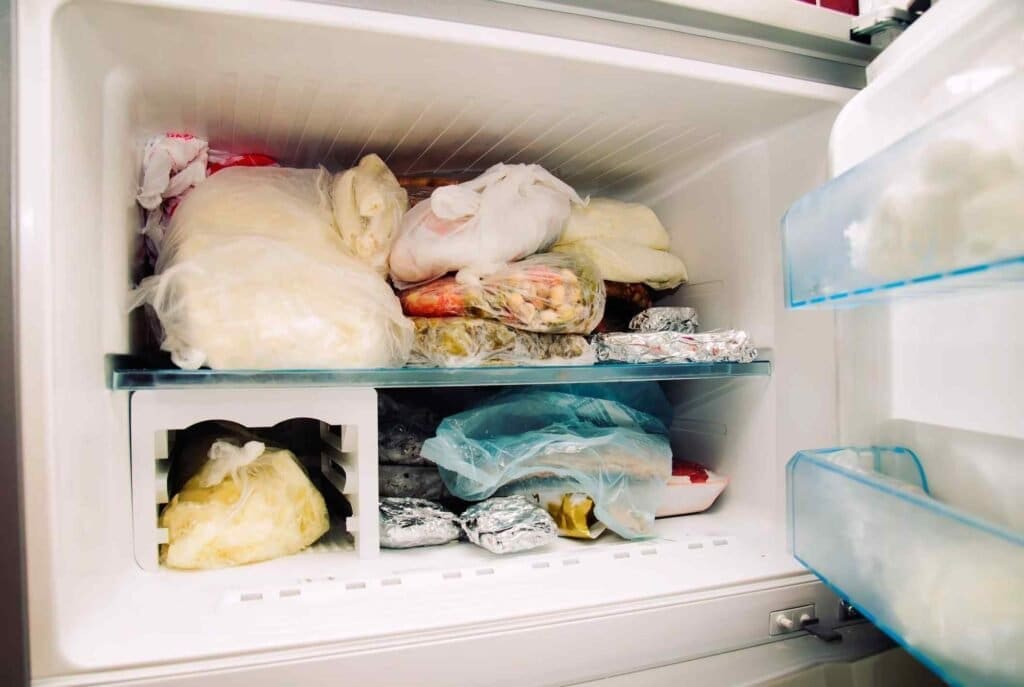
To maintain their freshness for a longer period, it’s advisable to keep fresh chestnuts in a breathable container, like a paper bag, inside the crisper section of your fridge.
This approach helps in preserving their moisture while ensuring they’re kept cool. Such a strategy is based on the principle of keeping an optimal humidity level around the chestnuts to prevent them from drying out prematurely.
Studies show that chestnuts, different from other nuts, are high in moisture content, which makes them susceptible to spoilage if not preserved properly. By opting for a breathable container, you enable a bit of air flow, which is vital in preventing mold and deterioration.
This method can extend the chestnuts’ usability for several weeks, ensuring they stay firm and tasty. It’s a straightforward yet effective technique that utilizes the fridge’s regulated environment to keep the chestnuts in good condition.
2. Freezing
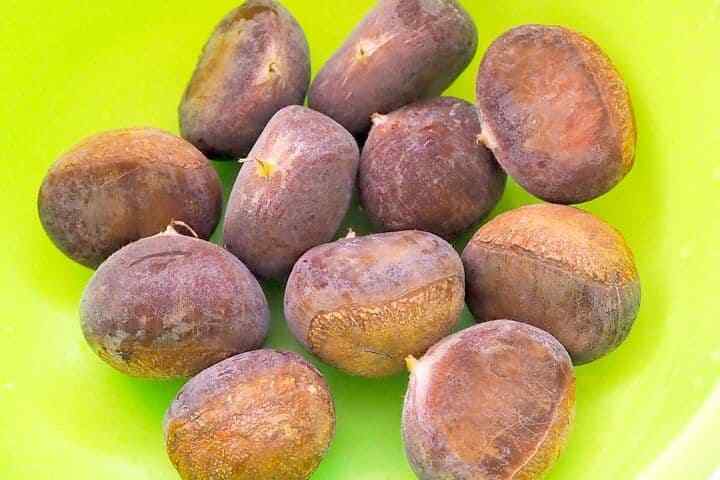
While refrigeration keeps chestnuts fresh for weeks, freezing them prolongs their freshness for several months, making it an excellent method for storing them over the long term.
This technique involves specific steps to ensure the chestnuts are just as delicious when thawed. Initially, scoring the shells is necessary to prevent them from bursting during the blanching process.
Blanching them in boiling water for a minute not only simplifies the peeling but also stops enzymes that could cause the chestnuts to spoil.
After removing both the outer shell and the inner skin, it’s critical to place the chestnuts in an airtight container or zip-lock bag to avoid freezer burn and loss of flavor.
| Step | Description |
|---|---|
| Scoring | Cut into the shell to allow steam to escape. |
| Blanching | Boil for a short time to ease peeling. |
| Peeling | Take off both outer shell and inner skin. |
| Freezing | Put in an airtight container or zip-lock bag. |
Adhering to these food preservation practices guarantees that chestnuts maintain their quality for an extended time, allowing you to enjoy the essence of autumn for much longer.
3. Cool, Dry Place
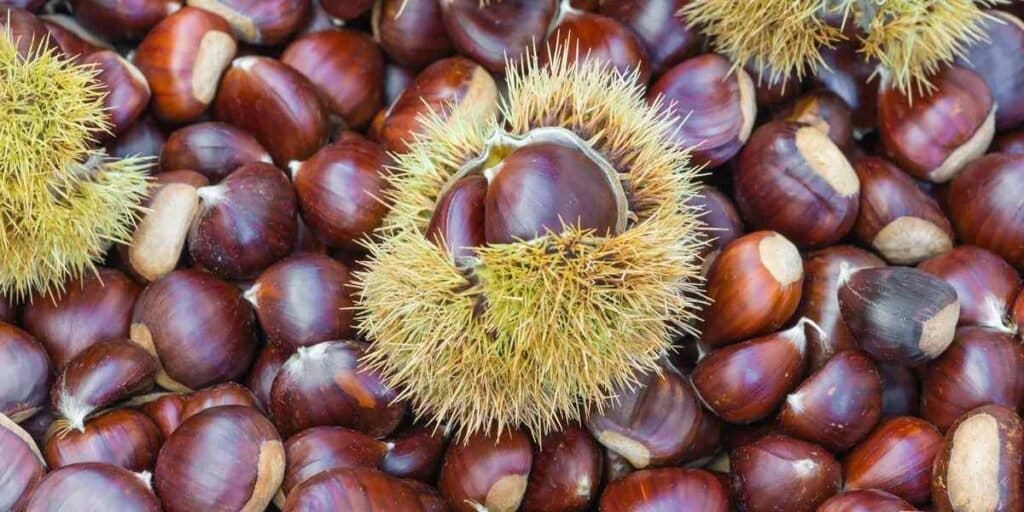
For those looking for a brief storage option for chestnuts, placing them in a cool, dry area of your pantry or kitchen is effective, as long as they’re stored in a container that promotes air flow to prevent mold.
- Temperature: Choose a location that keeps a steady temperature, ideally between 32-50°F (0-10°C).
- Humidity: The area should have low humidity to prevent the nuts from becoming damp and moldy.
- Container: Opt for mesh bags, paper bags, or any container that promotes air circulation.
- Separation: Store chestnuts away from other produce to prevent cross-contamination.
- Inspection: Regularly check for any signs of spoilage or mold and remove those nuts quickly.
This method, focusing on controlling moisture and maintaining the right temperature, helps keep the chestnuts in good condition for brief use.
4. In Shell Storage
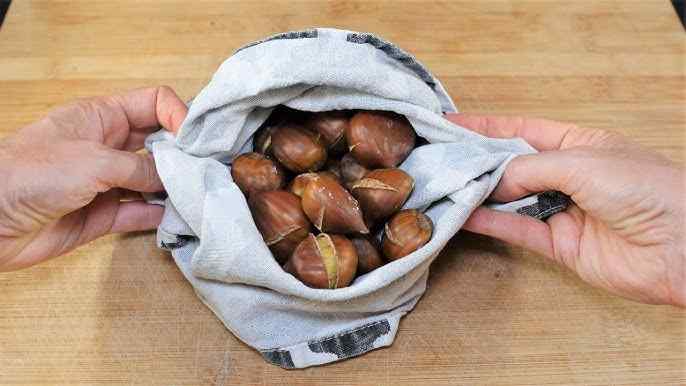
Storing chestnuts within their natural shell can significantly prolong their freshness by maintaining moisture levels, presenting an effective strategy for short-term preservation in a refrigerator or a cool storage area.
This approach utilizes the shell’s inherent barrier to keep the surrounding humidity optimal, thereby reducing the likelihood of the nuts drying out.
When stored in a cool, well-ventilated space, this method of keeping chestnuts encased in their shell effectively decelerates their metabolic activities, such as breathing and enzyme actions, which helps in preserving their quality over time.
Regular checks for any signs of spoilage or mold are essential, as these issues can quickly compromise the condition of the nuts, even when protected by their shells.
5. Airtight Containers
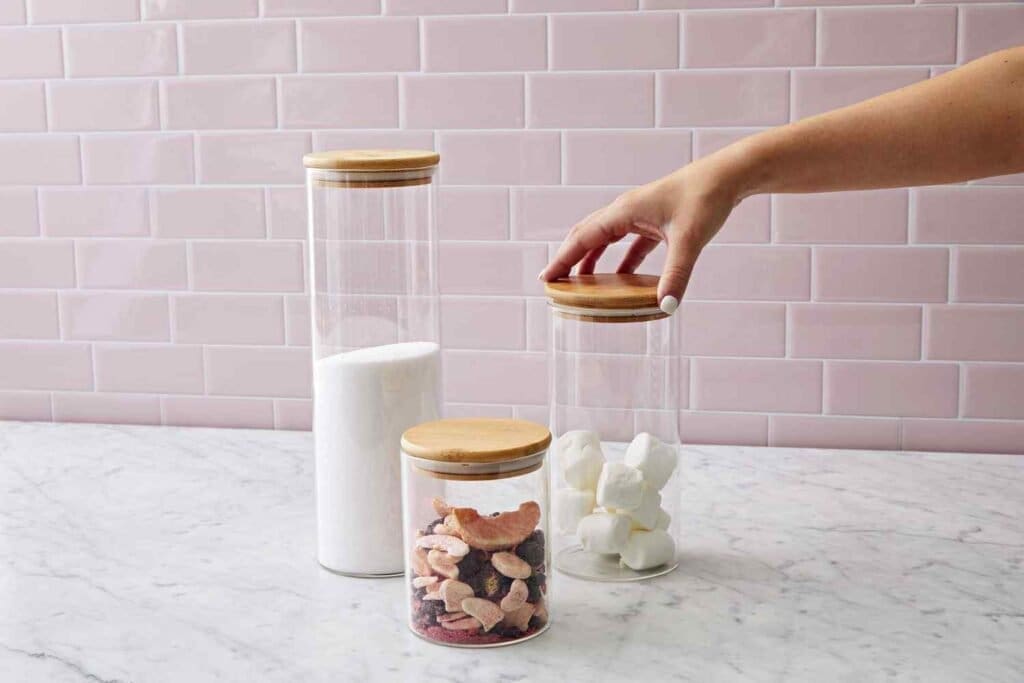
Storing chestnuts in airtight containers after they’ve been peeled is essential for keeping them fresh in the refrigerator for a number of days.
This method effectively prevents drying and unwanted smells from affecting the chestnuts. The use of airtight containers plays a vital role in reducing air exposure, crucial for preserving the quality of peeled chestnuts. This strategy is supported by several important factors:
- Control of Temperature: Keeping these nuts cool helps slow down their decay.
- Keeping Moisture: Sealing in moisture with these containers ensures the chestnuts remain juicy.
- Avoiding Smells: Creating a barrier against the ambient smells in a refrigerator keeps the chestnuts from picking up any unwanted scents.
- Storage Efficiency: These containers are easy to organize within a refrigerator, making the most of the available space.
- Sustainability: The ability to use these containers multiple times makes them an environmentally friendly option for storage.
Grasping these considerations is critical for anyone wishing to keep their chestnuts in prime condition after peeling.
6. Vacuum Sealing
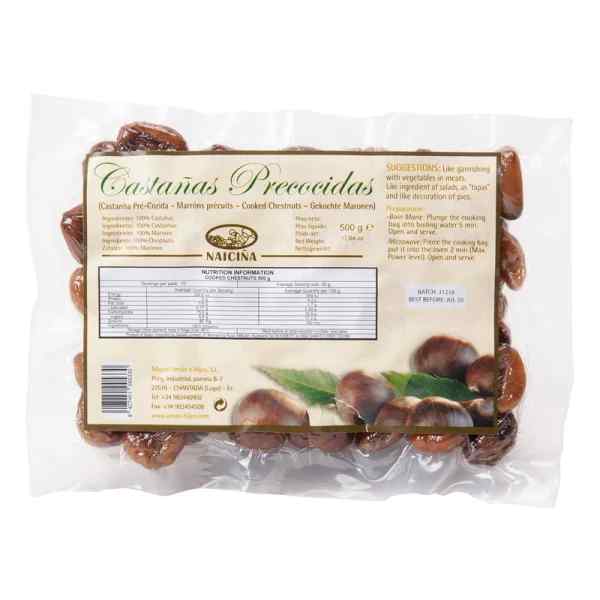
Employing a vacuum sealer to wrap your chestnuts, whether with or without their peel, before storing them in the refrigerator or freezer, can significantly enhance their longevity by reducing air exposure and thus slowing the oxidation process.
This method relies on the principle that lower oxygen levels in the storage environment greatly slow down the chemical reactions leading to spoilage.
Research shows that vacuum sealing can increase the shelf life of food products by 3 to 5 times more than traditional storage techniques.
For chestnuts, this translates to maintaining their natural moisture, flavor, and nutritional benefits for extended periods.
Crucially, vacuum sealing yields the best results when the chestnuts are clean and free of moisture, which helps prevent mold development and ensures effective preservation. This strategy provides a practical way to make the most out of chestnuts, using technology to improve food storage efficacy.
7. In Water
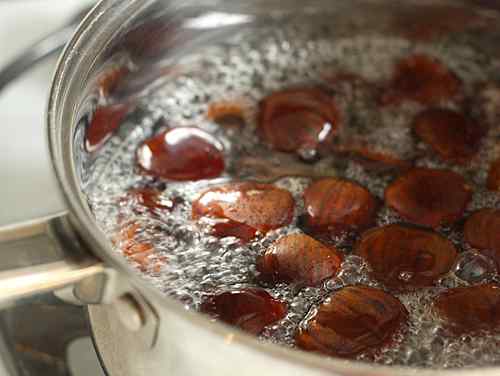
Exploring the benefits of vacuum sealing chestnuts reveals another simple yet effective technique for keeping peeled chestnuts fresh: submerging them in water and storing them in the refrigerator.
This method demands careful maintenance to avoid spoilage while ensuring the chestnuts remain fresh for up to a week.
- Change Water Daily: Imperative to stop bacterial growth and spoilage.
- Keep in the Fridge: Ensures chestnuts are stored at a cool temperature, minimizing spoilage risks.
- Only for Peeled Chestnuts: This technique is best for peeled chestnuts, allowing water to better saturate the flesh.
- Maintains Moisture: Keeping them submerged aids in retaining moisture, ensuring the chestnuts stay juicy.
- Regular Checks for Spoilage: Important to routinely inspect for any signs of spoilage to maintain quality.
This method isn’t only practical but also effective in preserving the texture and flavor of chestnuts, making it a preferred choice for short-term storage.
8. Dry and Dark Location
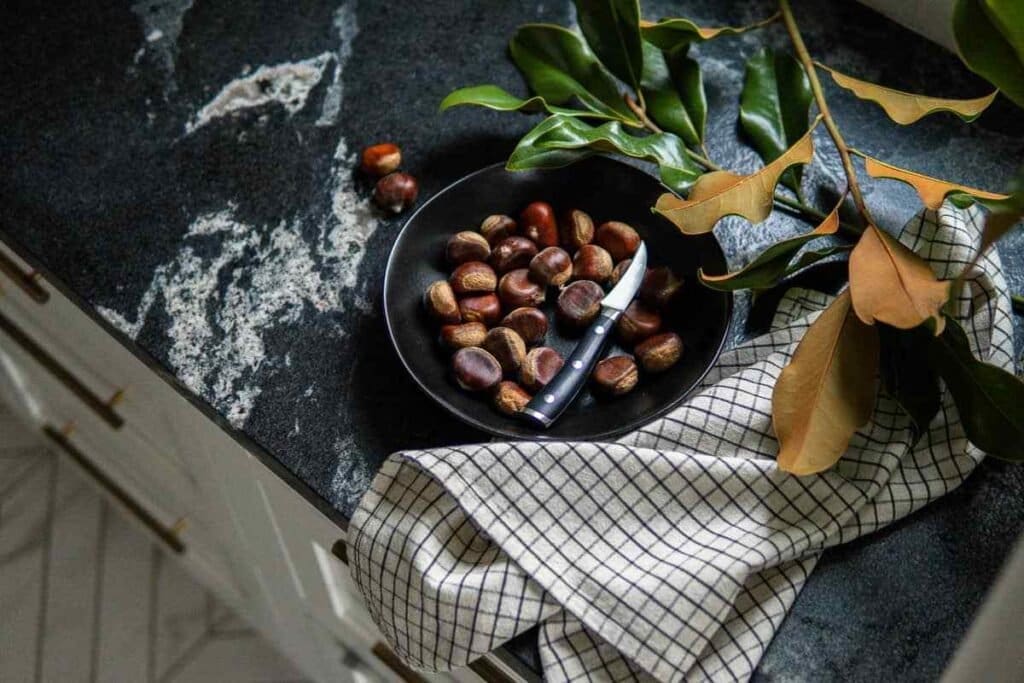
Keeping whole, unpeeled chestnuts in a mesh or breathable bag and placing it in a location that is both dry and lacks light can significantly increase their freshness duration.
This method utilizes the principle of minimizing moisture exposure, which is vital for preventing the growth of mold and the process of becoming rancid.
A setting devoid of light also reduces the risk of nutrient degradation due to exposure to light, which can negatively impact the nutritional value of the chestnuts.
| Benefit | Explanation |
|---|---|
| Lower Mold and Bacterial Growth | Minimal moisture hinders the development of mold and bacteria. |
| Longer Freshness | Arid conditions decelerate the deterioration processes. |
| Nutritional Integrity Maintained | Absence of light protects vitamins sensitive to light exposure. |
| User-Friendly | Straightforward and easy to apply. |
This strategy is in line with scientific research that highlights the significance of proper storage conditions for maintaining the quality and safety of food items.
9. Roasting and Storing
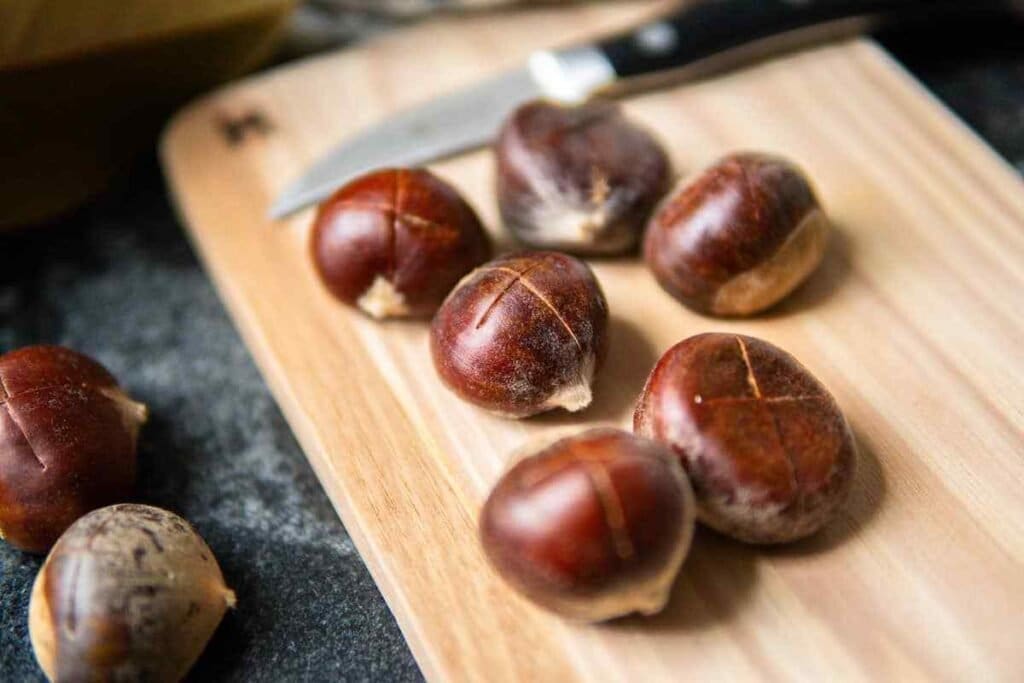
While the approach of storing chestnuts in a cool and dark area provides a temporary method to maintain their freshness, cooking them through roasting notably increases their preservation time when they’re then placed in sealed containers within the refrigerator.
- Roasting Temperature: Studies suggest that a temperature setting of 350°F (175°C) is optimal for achieving an even roast of chestnuts.
- Cooling Time: It’s necessary to let the chestnuts cool down entirely before putting them away to avoid the accumulation of moisture.
- Airtight Containers: Opt for containers with vacuum sealing to reduce exposure to air.
- Refrigeration Duration: When stored correctly, chestnuts that have been roasted can remain fresh for a duration of up to three weeks in the refrigerator.
- Moisture Control: Placing a desiccant packet inside the storage container helps in absorbing any surplus moisture, thus further prolonging the chestnuts’ freshness.
Adhering to this detailed method promises a longer enjoyment period of your chestnuts, with their taste and nutritional benefits kept intact.
10. Chestnut Flour
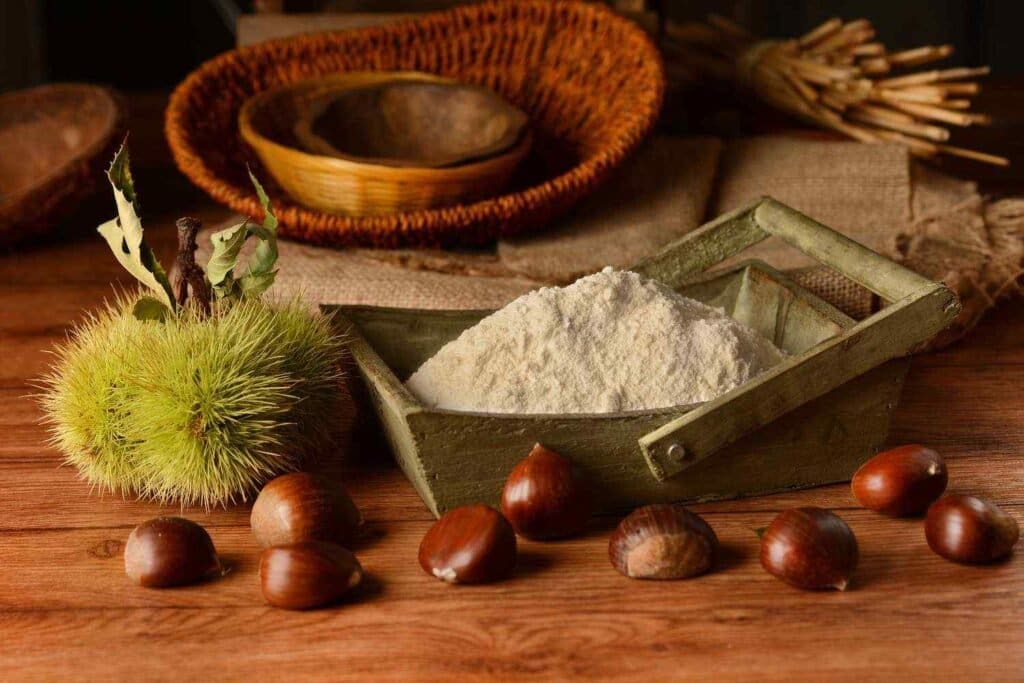
Turning excess chestnuts into flour through baking and pulverizing them is an efficient way to ensure their longevity in your pantry. This method not only makes full use of chestnuts but also offers an alternative to traditional flour for those who avoid gluten in their diet.
Studies show that flour made from chestnuts maintains most of its nutritional benefits, including being rich in fiber, low in fat, and containing important minerals like potassium and magnesium.
For optimal results, it’s essential to bake and peel the chestnuts prior to pulverizing them into a smooth powder.
Keeping the flour in a sealed container in a cool, dry location or refrigerated is vital to avoid moisture and prevent it from going bad.
This practice guarantees that your chestnut flour stays fresh and ready to use for a considerable time, providing a practical solution for extending the shelf life of your chestnuts.



